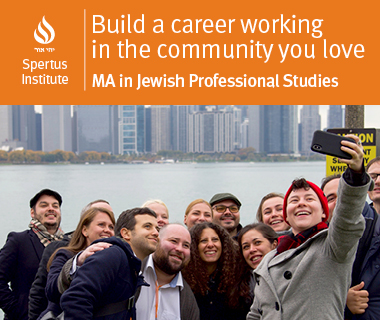Rethinking Sukkot
Permanent link All PostsWhile celebrating Sukkot this week, I found myself rethinking what the symbols and rituals of the Fall harvest holiday have to teach us throughout the rest of our year. If you pause to think about these rituals for a bit, they may seem a little odd: We are commanded to build a hut-like structure, dwell in it, and invite guests to join us. We are then told to shake together a citron and a bunch of dead branches in different directions. When you put it that way, these rituals sound more than just a little bit strange. And, yet many of us take much joy in celebrating this holiday, so it must be important and worthwhile, right?
Following Yom Kippur, a period of introspection and repentance, we are now ready for a period of renewal and redefinition. The sukkah itself is a symbol of extending our home and of creating a safe space outside of where we normally reside. If we think about this in its symbolic form, we can begin to evaluate how safe we feel, and how safe we make others feel, in the spaces we inhabit throughout our lives--like the places we go to work, worship, study, relax, and entertain ourselves. Of course, for all of us, what defines these places and who we share them with are all very different. Today, we should stop and evaluate whether or not we are following the commandment of creating a sukkat sh'lomecha, a shelter of peace, in these places where everyone should feel comforted—not only by the strength of the walls surrounding us (clearly lacking in a sukkah), but by the good nature we establish in the human bonds we create.
The shaking of the etrog and the lulav traditionally serves as a remembrance that God is everywhere, since we shake these symbols in all directions. However, I propose we think about this as a symbol of the way we position ourselves and direct our own interactions at those who surround us. In Hebrew, this is known as kavannah, literally meaning "direction," and the intentions we have and the way we develop them. The idea of kavannah is rooted in choice, and how we choose to direct ourselves at others who surround us is a key element we can extract from this symbol. When we take the lulav and etrog into our sukkah and look around as we are surrounded by our guests, maybe we are really commanded to put aside our differences and the things which segment our communities. We then look up through our temporary roof and see the great sky stretched out above us and recognize that we are all here and in this together, huddled within our temporary confines, living out our holy, yet also ever-temporary lives.
When we leave the sukkah to return to our regular everyday existence—back to our normal patterns, now once again surrounded by much stronger, familiar walls—all we are left with is the experience we had during the holiday season. If we have truly harvested this experience, we can walk away from the sukkah and allow it to continue to nourish us for the year to come. We can continue to challenge ourselves to move beyond the ordinary and to build a constant sanctuary of peace forever.
Chagim u'zmanim l'sasson. May this festival season be one of great joy for all of you



.jpg)



